 An important province in western China catches worldwide attention with its rich resources, promising economic outlook and fruitful agricultural produce 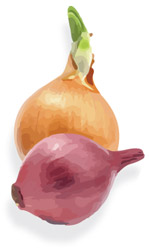 As the focal point of western China, Sichuan is well connected by all means of transportation to the north, south, east and centre of the mainland. Covering a total area of 486,000 square kilometres and home to more than 90 million people, Sichuan is the fourth and fifth largest province in the country in terms of population and size respectively. As the focal point of western China, Sichuan is well connected by all means of transportation to the north, south, east and centre of the mainland. Covering a total area of 486,000 square kilometres and home to more than 90 million people, Sichuan is the fourth and fifth largest province in the country in terms of population and size respectively.There are 21 municipalities and 183 counties under Sichuan provincial administration. Long famous for its natural resources, Sichuan is strong in both its economic performance and agricultural production. Cultural diversity is another characteristic of the province. With a minority population of about 4.9 million people, Sichuan is the second largest region occupied by Tibetan people, has the largest population of Yi people and is the only area inhabited by Qiang people in the country. 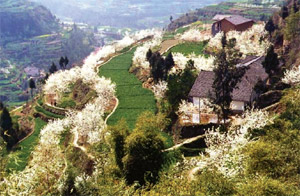 Sichuan’s GDP in 2013 reached US$422bn. Among its high-performing industries, the agrarian, livestock and fishing sectors increased in value by US$55bn, outperforming any other province in western China. Sichuan’s GDP in 2013 reached US$422bn. Among its high-performing industries, the agrarian, livestock and fishing sectors increased in value by US$55bn, outperforming any other province in western China.Sichuan has more than 5.9 million hectares of cultivated land, and 35.3 per cent of its land is covered by forest. Vast areas of fertile land, a sufficient supply of labour, an unique geographical landscape, a favourable climate, rich natural resources and a versatile range of agricultural products mean that Sichuan has earned the prestigious name of “plentiful paradise”. With a long tradition of farming, Sichuan is well-known for producing a diverse range of crops — products typically grown in temperate and subtropical zones. As one of three major forest regions in China, the province is also one of five important pastoral areas and 13 influential food production bases in the country. Being the most significant production and trading area for agricultural products in western China, and regarded as a microcosm of China’s farming industry, Sichuan contributes enormously to food safety, economic development and social stability in China.  Gifted advantages  With a humid subtropical climate favourable to farming, the basin area of east Sichuan has 70 per cent of the province’s cultivated land, generating 80 per cent of total food produce and 70–80 per cent of subsidiary products with economic value. With a humid subtropical climate favourable to farming, the basin area of east Sichuan has 70 per cent of the province’s cultivated land, generating 80 per cent of total food produce and 70–80 per cent of subsidiary products with economic value.The Panzhihua-Xichang region is proudly named as the “golden delta” and “treasure basin” of the upper Yangtze River, thanks to its ideal climate for growing a variety of fruits, including mangoes, pomegranates and grapes. Moreover, the high mountains and valleys in the west are suitable for growing off-season vegetables and other speciality food. Summer, early and late autumn are three major harvest seasons in Sichuan. Rice, wheat, corn, sweet potatoes, potatoes and soybeans are best-sellers, while commercial cash crops include rapeseed, peanuts, vegetables, fruits, tea, medicinal plants and herbs, flowers, silkworm-mulberry, cotton, sugar cane, tobacco and bast fiber plants. Prominent role As one of the 13 most important food production bases in China and the only one in the west of the country, Sichuan Province produced 33.87 million tonnes of food in 2013, achieving continuous growth for seven consecutive years for the first time and also breaking records for total food production for three consecutive years. Also in 2013, the province produced 2.23 million tonnes of rapeseed and was ranked the second largest producer of rapeseed in China.  Leading the way Leading the wayGrasping firmly promising development opportunities, Sichuan is determined to upgrade its modern farming infrastructure while forging ahead with the development of speciality food. Efforts are paying off with a pleasing variety of quality food being produced, such as grains, oils, fruits, vegetables and tea. In 2013, the province successfully established 800 “model zones” of modern farming, each covering thousands of hectares of land and generating millions of dollars worth of output value. Potatoes are a key product, with both the total growing area and production the highest in China. While tea and vegetables production ranks third in the country, fruits, Chinese medicinal plants and herbs, tobacco and silkworm-mulberry are of equal importance.  Sichuan labels Sichuan labelsBy the end of 2013, a total of 3,390 food brands had labels which show provenance and indicate certified or registered green food, organic food and food that is not hazardous to health. Sichuan’s food, herbs and plant extracts have already gained nationwide popularity. Regional brands such as Sichuan Paocai, Emei Shan Cha, Da Liang Shan, Chuan Zang Gao Yuan, Yibin Zao Cha and Guangyuan Qi Jue can be found, in addition to other corporate brands such as Zhu Ye Qing and Ji Xiang Ju. Of equal popularity are apples from Xi Chang, mangoes from the Panzhihua-Xichang region, summer oranges from Jiang’an, lemons from Anyue, canarium from Guangyuan, and honey peaches and loquats from Chengdu. Sichuan is also the number one production area for Ligusticum chuanxiong and Fritillaria cirrhosa. Competitive edges Sichuan is at the forefront of breeding and cultivation and supplies a variety of innovative food. A distinctive example is the scientific research into and breeding of hybrid rice. Tops in China in terms of varieties, inter-provincial regulating amount and export volume, it is sold and exported to 15 domestic provinces and countries in Southeast Asia, accounting for half of China’s total exports of hybrid rice. The area used for producing the seeds of hybrid rapeseed is the second largest in China while the breeding, seed production and field production of hybrid wheat are first in the country. 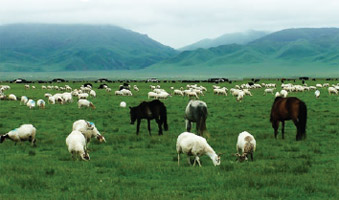 Distinctive standards Distinctive standardsSichuan’s unique geographical landscapes and climatic conditions are ideal for growing a variety of agricultural products. It takes advantage of natural resources and fully utilises every piece of cultivated land to form a highly integrated agricultural production structure. The province’s agricultural production standard has been upgraded as a result of a sophisticated and comprehensive system for food development, cultivation, trading and investment. Currently, the province has more than 8,500 agricultural enterprises, among which 60 are classified as national-level organisations and 589 as provincial-level. Livestock counts As one of the five major regions for animal husbandry in China, Sichuan ranks first in the production of pork, waterfowl (ducks and geese), rabbit and honey. In 2013, about 73.14 million pigs were reared, in addition to 2.65 million cattle and 15.84 million sheep. Meat production, including pork, beef and mutton, totalled more than 6.6 million tonnes, among which pork production exceeded 5.1 million tonnes. Fishing sector As the “thousand-rivers province”, Sichuan is well-known for its water resources, providing unbeatable natural conditions for cultivating freshwater fish. In 2013, almost 200,000 hectares were utilised for fish farming, outputting about 1.26 million tonnes of fishery products. Rainbow trout, sturgeon and caviar are among the most popular exported to the EU markets.  Agricultural machinery Agricultural machineryThere are more than 120 enterprises in Sichuan engaged in the agricultural machinery industry with total production values amounting to more than US$1.6bn, the highest in western China. Machinery and its corresponding products are also exported to areas such as Southeast Asia and Africa. Mechanised cultivation is forging ahead rapidly in the province with agricultural machinery generating a total power wattage of 39.37 million kilowatts in 2013 and with close to 45 per cent of farming activities now using agricultural machinery. 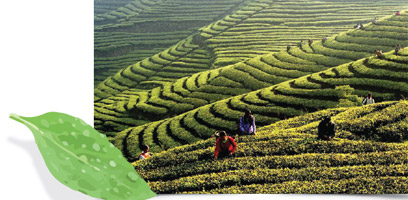 Liquor business Liquor businessProudly declared to be the “liquor province”, Sichuan produces 700,000 tonnes of liquor annually, 400,000 tonnes of which are sold outside of the province. Among the top 13 liquor brands in China, six are produced in Sichuan. Liquors such as Wu Liang Ye (Five-Grain Liquor) and Jian Nan Chun are popular domestically and internationally. Lucrative tourism Sichuan has numerous remarkable tourist attractions that are classified as World Natural and Cultural Heritage Sites, namely Jiuzhaigou Valley, Huanglong Scenic Area, the Giant Panda Habitat, Dujiangyan Irrigation System, Mount Qingcheng and the Grand Buddha in Leshan and Mount Emei. Other breathtaking scenes include the Longquan Peach Blossom Festival, the terraced fields in southern Sichuan, the plateaus in the northwest and many unique and beautiful villages with their own cultural characteristics.  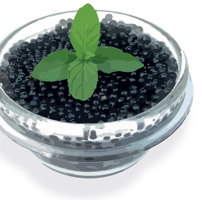 Speeding co-operation Speeding co-operationSichuan has accelerated its open-door policy for the agricultural industry and is assertive in exploring markets abroad while attracting overseas investment with its flexibility. Major exports include all kinds of cereals and cereal powders, vegetables, tea, canned mushrooms, medicinal plants and herbs, tobacco, liquor, raw silk and ramie. Areas for access to overseas investors have been broadened. The Catalogue of Advantageous Industries for Foreign Investment in Central and Western Regions (2013 Amendment) includes initiatives related to the processing of sweet potatoes and non-grain food and integrated use of other subsidiary agricultural products, in particular the rearing and slaughter of pigs, cattle, sheep and small poultry. Also included are development for key national ecological construction projects to convert cropland to forest and grassland as well as protecting natural forests; the development and application of technologies for water-efficient irrigation, water saving measures on arid areas and conservation tillage; and the brewing of grape wine and other fruit wines.  Strong economic development Strong economic developmentCurrently, Sichuan is a golden development opportunity in western China and along the lucrative Yangtze River region. This perception is fully justified by the fact that Sichuan’s GDP, total food production, industrial production and total retail value of consumer goods outperform the other 12 provinces and regions in western China. The province is highly motivated to implement its open-door policy at speed, as it offers a favourable and attractive business environment to overseas investors. This is clearly seen by the presence of 10 foreign consular offices and 200 Fortune 500 enterprises. Economic development is further enhanced by the aims to improve and upgrade the transportation system, including by air, road and sea. 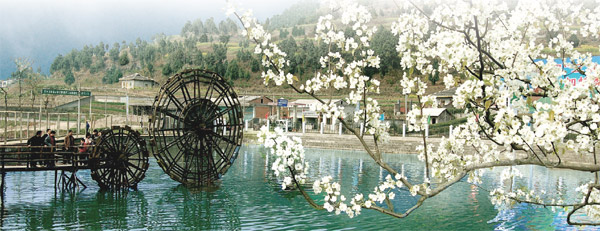 As the capital city of Sichuan, Chengdu is an important transportation hub between western China and Europe. With the efficient Chengdu-Europe International Express Railway System, it is one of six major railway connection points in the country. Heavy-duty cargo containers deliver thousands of tonnes of goods around the clock via navigation along the upper Yangtze River. As the capital city of Sichuan, Chengdu is an important transportation hub between western China and Europe. With the efficient Chengdu-Europe International Express Railway System, it is one of six major railway connection points in the country. Heavy-duty cargo containers deliver thousands of tonnes of goods around the clock via navigation along the upper Yangtze River.
Regarding air transport, there are 11 airports for passenger use. Chengdu Shuangliu International Airport is the fourth largest city airport in China and accommodates 72 international and domestic flights, reaching 171 cities around the world and domestically. Chengdu also allows a visa-free stay of 72 hours for passengers in transit. Such a pleasing environment has earned Sichuan fame as a great province for tourists and a most favourable place to live. It is considered to be “a place that nobody wants to leave”. Clearly, a desirable living environment and rapid economic development allow strong support for the agricultural industry in Sichuan — a province that welcomes overseas investment and co-operation of all kinds. Sichuan Provincial Agricultural Department 4 Wu Hou Ci St, Chengdu, Sichuan Province, China Tel: 86-28-8550-5730 Fax: 86-28-8550-5730 Email: scnymycj@163.com Web: www.scagri.gov.cn |


